![对称方法在偏微分方程中的应用 [Applications of Symmetry Methods to Partial Differential Equations]](https://pic.windowsfront.com/11647752/54e1b517N34053d38.jpg)

具体描述
内容简介
This book is a sequel to Symmetries and Integration Methods (2002), by George W. Bluman and Stephen C. Anco. It includes a significant update of the material in the last three chapters of Symmet'ries an,d Dzjjerential Equa-tions (1989; reprinted with corrections, 1996), by George W. Bluman and Sukeyuki Kumei. The emphasis in the present book is on how to find sys-tematically symmetries (local and nonlocal) and conservation laws (local and nonlocal) of a given PDE system and how to use systematically symmetries and conservation laws for related applications. In particular, for a given PDE system, it is shown how systematically (1) to find higher-order and nonlocal symmetries of the system; (2) to construct by direct methods its conserva- tion laws through finding sets of conservation law multipliers and formulas to obtain the fluxes of a conservation law from a known set of multipliers; (3) to determine whether it has a linearization by an invertible mapping and con- struct such a linearization when one exists from knowledge of its symmetries andlor conservation law multipliers, in the case wheii the given PDE system is nonlinear; (4) to use conservation laws to construct equivalent nonlocally related systems; (5) to use such nonlocally related systems to obtain nonlo- cal symmetries, nonlocal conservation laws and non-invertible mappings to linear systems; and (6) to construct specific solutions from reductions arising from its symmetries as well as from extensions of symmetry methods to find such reductions.This book is aimed at applied mathematicians; scientists and engineers interested in finding solutions of partial differential equations and is written in the style of the above-mentioned 1989 book by Bluman and Kumei. There are numerous examples involving various well-known physical and engineering PDE systems.
内页插图
目录
PrefaceIntroduction
1 Local Transformations and Conservation Laws
1.1 Introduction
1.2 Local Transformations
1.2.1 Point transformations
1.2.2 Contact transformations
1.2.3 Higher-order transformations
1.2.4 One-parameter higher-order transformations
1.2.5 Point symmetries
1.2.6 Contact and higher-order symmetries
1.2.7 Equivalence transformations and symmetry classification
1.2.8 Recursion operators for local symmetries
1.3 Conservation Laws
1.3.1 Local conservation laws
1.3.2 Equivalent conservation laws
1.3.3 Multipliers for conservation laws.Euler operators
1.3.4 The direct method for construction of conservation laws.Cauchy-Kovalevskaya form
1.3.5 Examples
1.3.6 Linearizing operators and adjoint equations
1.3.7 Determination of fluxes of conservation laws from multipliers
1.3.8 Self-adjoint PDE systems
1.4 Noether's Theorem
1.4.1 Euler-Lagrange equations
1.4.2 Noether's formulation of Noether's theorem
1.4.3 Boyer's formulation of Noether's theorem
1.4.4 Limitations of Noether's theorem
1.4.5 Examples
1.5 Some Connections Between Symmetries and Conservation Laws
1.5.1 Use of symmetries to find new conservation laws from known conservation laws
1.5.2 Relationships among symmetries,solutions of adjoint equations,and conservation laws
1.6 Discussion
2 Construction of Mappings Relating Differential Equations
2.1 Introduction
2.2 Notations; Mappings of Infinitesimal Generators
2.2.1 Theorems on invertible mappings
2.3 Mapping of a Given PDE to a Specific Target PDE
2.3.1 Construction of non-invertible mappings
2.3.2 Construction of an invertible mapping by a point transformation
2.4 Invertible Mappings of Nonlinear PDEs to Linear PDEs Through Symmetries
2.4.1 Invertible mappings of nonlinear PDE systems(with at least two dependent variables)to linear PDE systems
2.4.2 Invertible mappings of nonlinear PDE systems(with one dependent variable)to linear PDE systems
2.5 Invertible Mappings of Linear PDEs to Linear PDEs with Constant Coefficients
2.5.1 Examples of mapping variable coefficient linear PDEs to constant coefficient linear PDEs through invertible point transformations
2.5.2 Example of finding the most general mapping of a given constant coefficient linear PDE to some constant coefficient linear PDE
2.6 Invertible Mappings of Nonlinear PDEs to Linear PDEs Through Conservation Law Multipliers
2.6.1 Computational steps
2.6.2 Examples of linearizations of nonlinear PDEs through conservation law multipliers
2.7 Discussion
3 Nonlocally Related PDE Systems
3.1 Introduction
3.2 Nonlocally Related Potential Systems and Subsystems in Two Dimensions
3.2.1 Potential systems
3.2.2 Nonlocally related subsystems
3.3 Trees of Nonlocally Related PDE Systems
3.3.1 Basic procedure of tree construction
3.3.2 A tree for a nonlinear diffusion equation
3.3.3 A tree for planar gas dynamics(PGD)equations
3.4 Nonlocal Conservation Laws
3.4.1 Conservation laws arising from nonlocally related systems
3.4.2 Nonlocal conservation laws for diffusion-convection equations
3.4.3 Additional conservation laws of nonlinear telegraph equations
3.5 Extended Tree Construction Procedure
3.5.1 An extended tree construction procedure
3.5.2 An extended tree for a nonlinear diffusion equation
3.5.3 An extended tree for a nonlinear wave equation
3.5.4 An extended tree for the planar gas dynamics equations
3.6 Discussion
4 Applications of Nonlocally Related PDE Systems
4.1 Introduction
4.2 Nonlocal Symmetries
4.2.1 Nonlocal symmetries of a nonlinear diffusion equation
4.2.2 NonlocAL symmetries of a nonlinear wave equation
4.2.3 Classification of nonlocal symmetries of nonlinear telegraph equations arising from point symmetries of potential systems
4.2.4 Nonlocal symmetries of nonlinear telegraph equations with power law nonlinearities
4.2.5 Nonlocal symmetries of the planar gas dynamics equations
4.3 Construction of Non-invertible Mappings Relating PDEs
4.3.1 Non-invertible mappings of nonlinear PDE systems to linear PDE systems
4.3.2 Non-invertible mappings of linear PDEs with variable coefficients to linear PDEs with constant coefficients.
4.4 Discussion
5 Further Applications of Symmetry Methods: Miscellaneous Extensions
5.1 Introduction
5.2 Applications of Symmetry Methods to the Construction of Solutions of PDEs
5.2.1 The classical method
5.2.2 The nonclassical method
5.2.3 Invariant solutions arising from nonlocal symmetries that are local symmetries of nonlocally related systems
5.2.4 Futrther extensions of symmetry methods for construction of solutions of PDEs connected with nonlocaUy related systems
5.3 Nonlocally Related PDE Systems in Three or More Dimensions
5.3.1 Divergence-type conservation laws and resulting potential systems
5.3.2 Nonlocally related subsystems
5.3.3 Tree construction,nonlocal conservation laws,and nonlocal symmetries
5.3.4 Lower-degree conservation laws and related potential systems
5.3.5 Examples of applications of nonlocally related systems in higher dimensions
5.3.6 Symmetries and exact solutions of the three-dimensional MHD equilibrium equations
5.4 Symbolic Software
5.4.1 An example of symbolic computation of point symmetries
5.4.2 An example of point symmetry classification
5.4.3 An example of symbolic computation of conservation laws
5.5 Discussion
References
Theorem,Corollary and Lemma Index
Author Index
Subject Index
前言/序言
用户评价
我是一名资深的软件工程师,经常需要处理各种复杂的模型,其中就涉及大量的偏微分方程。虽然我的工作主要集中在数值模拟和算法实现上,但我一直对理论基础有着浓厚的兴趣,并坚信扎实的理论功底能够帮助我写出更高效、更鲁棒的代码。我最近接触到了一些关于PDEs求解的“解析方法”的讨论,并对其中提到的“对称性”产生了极大的好奇。我常常在想,如果某些PDEs能够因为其内在的对称性而被简化,那么在数值层面是否也能从中获得启发?我希望找到一本能够 bridging the gap between theory and practice的书。这本书应该能够清晰地解释,对于那些在工程领域常见的PDEs,比如 Navier-Stokes 方程在某些特殊情况下的对称性,或者热传导方程中的缩放对称性。我期待它能展示如何利用这些对称性来发现一些特殊类型的解,例如自相似解(self-similar solutions),或者如何利用它们来设计更有效的数值算法。我尤其感兴趣的是,这本书是否能提供一些实际的计算流程,展示如何一步一步地识别对称性,并将其转化为具体的求解步骤。如果书中能够包含一些关于如何利用对称性来理解模型局限性,或者如何通过修改模型以引入期望的对称性的讨论,那将对我极具价值。我希望这本书能够让我更深入地理解PDEs的结构,并为我提供新的思路来解决实际工程问题。
评分我对数学建模和分析有着深深的着迷,尤其是在应用于科学研究时。在我看来,偏微分方程就像是描述物理世界运行规律的“代码”。然而,我常常感到,要理解和驾驭这些“代码”,需要掌握更高级的工具和思维方式。我听说过“对称性”是理解许多数学对象,包括PDEs的一个非常重要的视角。我非常渴望找到一本能够全面地介绍,如何系统地利用数学上的对称性来分析和求解偏微分方程的书。我的理想之书,应该能够从一个统一的框架出发,将各种形式的对称性(例如,空间对称性、时间对称性、缩放对称性、变换对称性等)都囊括其中,并展示它们如何被应用于各种不同类型的PDEs。我期待它能够深入浅出地讲解,如何通过识别方程的对称性来找到守恒量,或者如何通过利用对称性来降低方程的阶数,从而简化求解过程。我希望这本书能提供足够多的数学细节,让我能够理解背后的推导过程,而不是停留在概念层面。同时,我也希望它能展示一些实际应用的案例,比如在流体动力学、材料科学或电磁学等领域,如何通过对称性分析来获得有意义的结果。一本能够让我领略数学之美,同时又能为我的研究提供实际帮助的书,将是我最大的收获。
评分作为一名对数学史和数学哲学颇感兴趣的学者,我一直在追寻那些能够揭示数学思想演进脉络的著作。偏微分方程作为现代科学的基石,其发展历程中充斥着无数智慧的火花。我了解到,在PDEs早期发展阶段,许多重要的方程,如热方程和波动方程,其求解往往依赖于对特定问题的直观理解和巧妙的技巧。我好奇的是,这些技巧背后是否隐藏着更普遍的原理。我听说,“对称性”的概念在20世纪后期得到了极大的发展,并深刻地影响了整个数学的面貌。我迫切地想知道,这种强大的哲学和数学思想是如何与偏微分方程的求解联系起来的。我期待找到一本能够追溯“对称性”思想在PDEs求解中的历史渊源,并清晰地阐述其现代发展方向的书。这本书是否能介绍伽利略、牛顿等早期科学家是如何在不自觉中利用对称性来解决问题的?它是否能详细解释李群理论如何系统地阐明了连续对称性与PDEs之间的深刻联系,并催生出如“对称约化法”这样的强大工具?我尤其希望这本书能够不仅仅是介绍技术,更能引发读者对数学的本质、对称性在自然界普遍性以及人类如何通过抽象和归纳来理解世界的思考。如果书中能对不同文化背景下数学家对对称性在PDEs中的贡献进行一些梳理,那将更令我兴奋。
评分作为一名对理论物理学充满热情的学生,我一直在寻找能够深化我对某些核心概念理解的资源。偏微分方程无疑是其中的重中之重,它们是描述从量子场论到宇宙学中各种基本相互作用的语言。然而,我发现很多教材在介绍PDEs时,往往侧重于数值方法或者比较抽象的泛函分析,这使得我很难直观地把握问题的本质。我一直隐约觉得,在PDEs的结构中一定存在某种更深层次的规律,可以帮助我们理解和解决它们。我听说过“对称性”在物理学中扮演着至关重要的角色,它不仅预示着守恒律,还能够极大地约束系统的自由度。我非常好奇,这种强大的思想在PDEs的求解中会如何体现。我希望找到一本能够清晰地阐述,如何通过识别和利用PDEs的内在对称性来构建系统的解。例如,如果一个方程具有某种变换不变性,那么它的解是否也必须具有相应的性质?这本书是否能解释诸如连续对称性(如李对称性)如何转化为PDEs的离地性(reduction of order)或者生成解簇(generating solution families)?我特别期待它能够给出具体的例子,比如如何利用一个PDE的平移不变性来寻找其行波解,或者利用旋转对称性来简化三维问题。这样的书,无疑将为我打开一个全新的视角,让我能够以一种更优雅、更本质的方式来理解和处理偏微分方程。
评分我一直对数学的优雅和它解决现实世界问题的方式着迷,尤其是在物理学和工程学领域。最近,我开始涉猎偏微分方程(PDEs),并被它们在描述各种自然现象中的强大能力所震撼。然而,PDEs的世界也常常让我感到望而却步,它们的复杂性和求解的难度着实令人头疼。我听说过一些“对称性”的概念在数学中非常重要,但一直未能将其与PDEs的求解联系起来。我迫切地想找到一本能够清晰地解释如何利用这种“对称性”来简化PDEs求解过程的书。我的理想中的这本书,应该能从最基础的概念讲起,循序渐进地带领读者理解对称性的本质,并展示它在不同类型的PDEs中是如何体现的。我期待它能够提供丰富的例子,最好是那些在经典物理学,比如流体动力学、热传导或波动理论中经常遇到的问题。更重要的是,我希望这本书能不仅仅是介绍理论,而是能够展示具体的计算技巧和方法,让读者能够真正掌握如何运用对称性来发现PDEs的解析解,或者至少是大大简化其数值分析的过程。如果这本书还能提及一些前沿的研究方向,或者与其他数学分支(如李群、微分几何)的联系,那将是锦上添花,让我对这个领域有更深入的认识。我渴望找到一本能够激发我探索欲,并为我提供强大工具的书籍,让我能够自信地迎接PDEs挑战。
评分东西不错。。。。。。。。。。。
评分还不错~~~~~~~~~~~~~
评分买书。。。…。。。你要不要过来吗我困了,…。,…………。。。。。。。。
评分杜甫的思想核心是儒家的仁政思想。他有(致君尧舜上,再使风俗淳)的宏伟抱负。他热爱生活,热爱人民,热爱祖国的太好河山。他嫉恶如仇,对朝廷的腐败、社会生活中的黑暗现象都给予批评和揭露。他同情人民,甚至幻想着为解救人民的苦难甘愿做自我牺牲。杜甫是伟大的现实主义诗人,一生写诗一千四百多首。它深刻地反映了唐代安史之乱前后20多年的社会全貌,生动地记载了杜甫一生的生活经历,把社会现实与个人生活紧密结合,达到思想内容与艺术形式的完美统一,代表了唐代诗歌的最高成就。他的诗集被后代称作(诗史)。
评分杜甫的思想核心是儒家的仁政思想。他有(致君尧舜上,再使风俗淳)的宏伟抱负。他热爱生活,热爱人民,热爱祖国的太好河山。他嫉恶如仇,对朝廷的腐败、社会生活中的黑暗现象都给予批评和揭露。他同情人民,甚至幻想着为解救人民的苦难甘愿做自我牺牲。杜甫是伟大的现实主义诗人,一生写诗一千四百多首。它深刻地反映了唐代安史之乱前后20多年的社会全貌,生动地记载了杜甫一生的生活经历,把社会现实与个人生活紧密结合,达到思想内容与艺术形式的完美统一,代表了唐代诗歌的最高成就。他的诗集被后代称作(诗史)。
评分经典图书很好
评分经典图书很好
评分东西不错。。。。。。。。。。。
评分买书。。。…。。。你要不要过来吗我困了,…。,…………。。。。。。。。
相关图书
本站所有内容均为互联网搜索引擎提供的公开搜索信息,本站不存储任何数据与内容,任何内容与数据均与本站无关,如有需要请联系相关搜索引擎包括但不限于百度,google,bing,sogou 等
© 2025 book.coffeedeals.club All Rights Reserved. 静流书站 版权所有

![现代海洋测绘(上册)/普通高等教育“十一五”国家级规范教材·高等学校测绘工程系列教材 [Modern Marine Surveying and Charting] pdf epub mobi 电子书 下载](https://pic.windowsfront.com/11655865/54f42f10N93043cce.jpg)
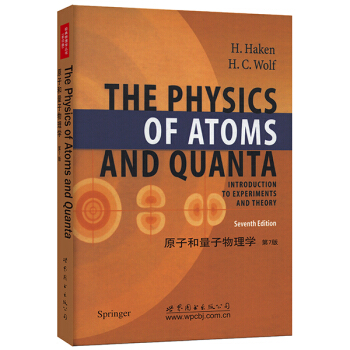

![走进教育数学:数学的神韵 [Go to Educational Mathematics] pdf epub mobi 电子书 下载](https://pic.windowsfront.com/11701602/557a327fN6c1e7385.jpg)
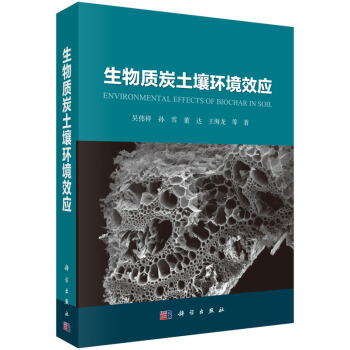
![广义线性模型导论(英文导读版 原书第3版) [An Introduction to Generalized Linear Models] pdf epub mobi 电子书 下载](https://pic.windowsfront.com/11712224/5583e70cN5f473cf1.jpg)





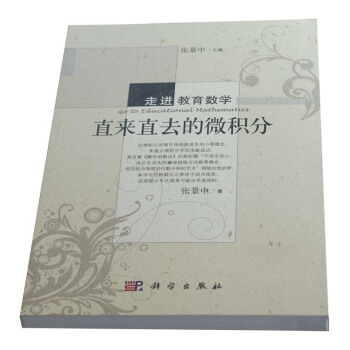
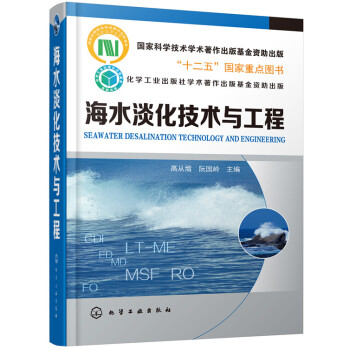


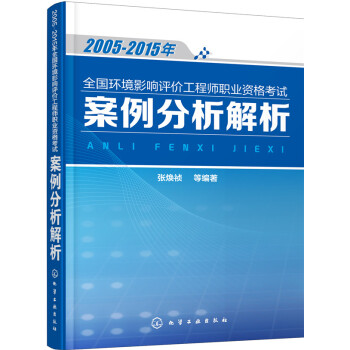
![数学领域中的发明心理学(珍藏版) [An Essay On The Psychology Of Invention in The Mathematical Field] pdf epub mobi 电子书 下载](https://pic.windowsfront.com/11884290/56f8fee3N64a5e5c9.jpg)
![数学证明(珍藏版) [Mathematical Proofs] pdf epub mobi 电子书 下载](https://pic.windowsfront.com/11884298/56f8fee4Nc6f763c7.jpg)
![数学与创造(珍藏版) [Mathematics And Creation] pdf epub mobi 电子书 下载](https://pic.windowsfront.com/11884304/56f8fee4N9fd880f7.jpg)
